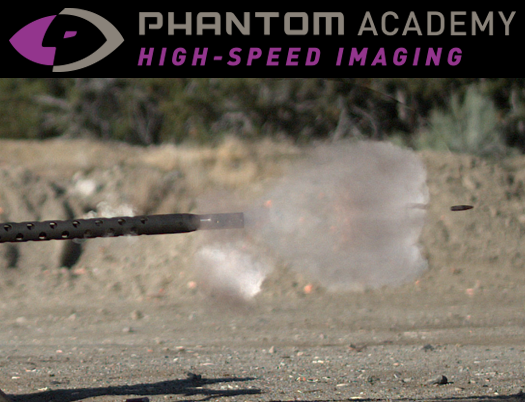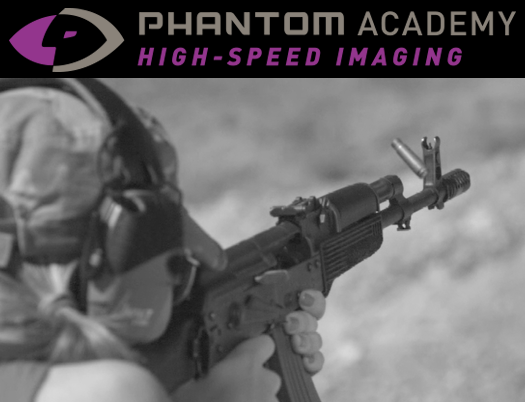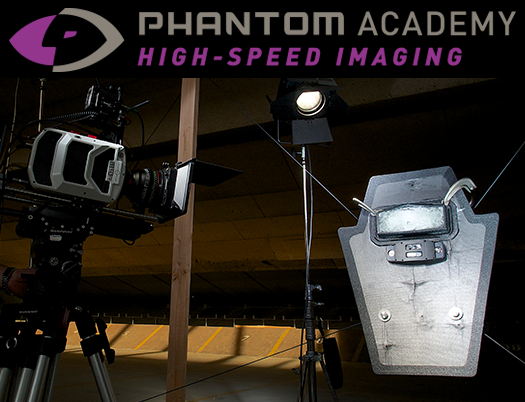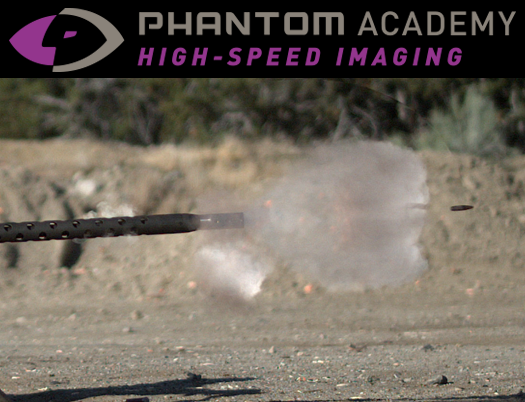Phantom Essentials Training Course
The hands-on coursework will help participants better understand challenges they may face in their applications and how to address them.
- Determining the Optimal System Setup
- Addressing Optical and Lighting Challenges
- Investigating Applications
- Phantom Camera Setup
- Analyzing Image Data
High-speed imaging in ballistics and on ranges is essential for understanding, troubleshooting, and promoting your work. Vision Research has designed an advanced hands-on course that covers the intricacies of using high-speed cameras for characterizing applications in ballistics and range studies. The beginning of the course will be focused on lecture, and the latter part will deal with hands-on learning and problem solving.
Some Concepts Covered:
This will be a three-and-a-half day course where attendees will experience:
- Key concepts in high speed imaging
- Workflow during operation of a high speed camera
- Advanced triggering strategies
- Continuous recording methodologies
- Integrating data acquisition with high speed imaging
- Digital image correlation to generate 3D strain maps
- Control and visualization of camera signals
- Synchronization of high-speed cameras
- Lighting techniques for ballistics and range experiments
- Quantification of projectile kinematics
- Hands-on experimentation and demonstrations
Details
High-Speed Imaging in Ballistics and Range Applications
- Location: Wayne Township, New Jersey
- Duration: 3.5 days
- Max Attendance: 16
- Next Course Date: TBA (email phantom.academy@ametek.com if interested)
- Pricing: $3500.00 (USD), includes breakfasts and lunches. Attendees will be responsible for lodging and travel expenses (i.e., airfare, taxis, etc.)
Key Concepts in High-Speed Imaging
Discussion and Lectures On:
- Stream-lined Workflows
- Machine Vision Cameras
- Selecting Equipment/Parameters
- Software and Processing
- Mitigating Flash Events
- Camera Signals, Timing, and Triggering
- Synchronizing Cameras, Data, and Video
- Digital Image Correlation
- Imaging Shockwaves
- Tracking Mounts
Hands-on Labs:
- Improving Image Quality with the Tone Curve)
- Hands-on Lab II (Mitigating Flash Events)
- Hands-on Lab III (Image Based Auto Trigger for High-speed Projectiles)
- Hands-on Lab IV (Kinematic Analysis of a Projectile in PCC)
Kyle D. Gilroy, PhD is a Field Applications Engineer for Vision Research, Ametek. He travels internationally orchestrating and consulting on high-speed experiments for a range of academic, government, and industrial high-speed applications. His expertise is in ballistics and explosion characterization, digital image correlation, and biomedical microfluidics. Kyle conducts group trainings on VRI hardware and software. Previously, he was a research fellow at the Georgia Institute of Technology where he conducted investigations centered on the synthesis, application, and characterization of inorganic nanomaterials in the Wallace H. Coulter Department of Biomedical Engineering. At Temple University, he assisted in teaching undergraduate and graduate level thermodynamics, while carrying out research at Temple University’s Renewable Energy Laboratory.
View Kyle D. Gilroy, PhD Curriculum Vitae

(Kyle D. Gilroy, PhD)
An info packet will be provided to you regarding lodging. The best airport to fly into is Newark International (EWR).
Yes, it is best to have it shipped the week previous to ensure a timely arrival.
Yes, you will receive an application-specific certification after attendance and instructor approval.
You can email us directly at phantom.academy@ametek.com.
Why yes, of course!
-
获取更多关于PHANTOM产品的信息
- 联系我们







